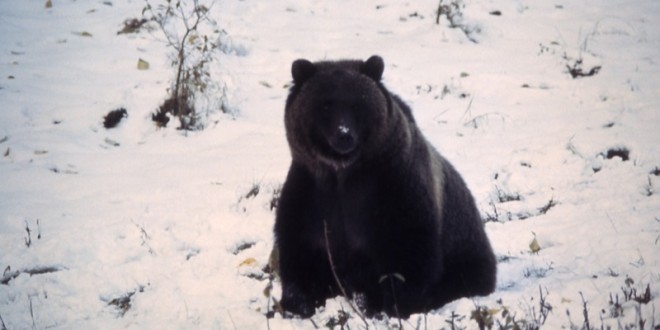Another sign of spring: Yellowstone bears are emerging from hibernation in the Greater Yellowstone Area, leading the National Park Service to issue a general warning to those still in the Park.
According to the NPS, hikers, skiers and snowshoers are advised to stay in groups of three of more, make noise on the trail and carry bear spray in case of an encounter with Yellowstone bears.
The first confirmed reports of grizzly bear activity in the Park were reported on March 4. Guides and visitors observed and photographed a grizzly bear along the road in the Hayden Valley area. The first black bear of the year was observed on February 11 near the south end of the park.
Yellowstone bears begin looking for food soon after they emerge from their dens. They are attracted to elk and bison that have died during the winter. Carcasses are an important enough food source that bears will sometimes react aggressively when surprised while feeding on them.
Because of the danger posed by bears, the Park Service closes down areas of Yellowstone throughout the year and issues other warning. You can see more about the closing and warnings at this Web page.
Although you’ll be warned about this when entering the Park this coming week and during the summer season, here’s a reminder of the NPS advice about bears:
Yellowstone regulations require visitors to stay 100 yards from black and grizzly bears at all times. The best defense is to stay a safe distance from bears and use binoculars, a telescope or telephoto lens to get a closer look. All visitors traveling in the park away from developed areas should stay in groups of three or more, make noise on the trail, keep an eye out for bears and carry bear spray. Bear spray has proven to be a good last line of defense, if kept handy and used according to directions when a bear is approaching within 30 to 60 feet.
While firearms are allowed in the park, the discharge of a firearm is a violation of park regulations. The park’s law enforcement rangers who carry firearms on duty rely on bear spray, rather than their weapons, as the most effective means to deal with a bear encounter.
Visitors are also reminded to keep food, garbage, barbecue grills and other attractants stored in hard-sided vehicles or bear-proof food storage boxes. This helps keep bears from becoming conditioned to human foods, and helps keep park visitors and their property safe.
Bear sightings should be reported to the nearest visitor center or ranger station as soon as possible.
Photo courtesy National Park Service. No, it’s not from this spring; it’s an archival shot.
 Yellowstone Insider Your Complete Guide to America's First National Park
Yellowstone Insider Your Complete Guide to America's First National Park





